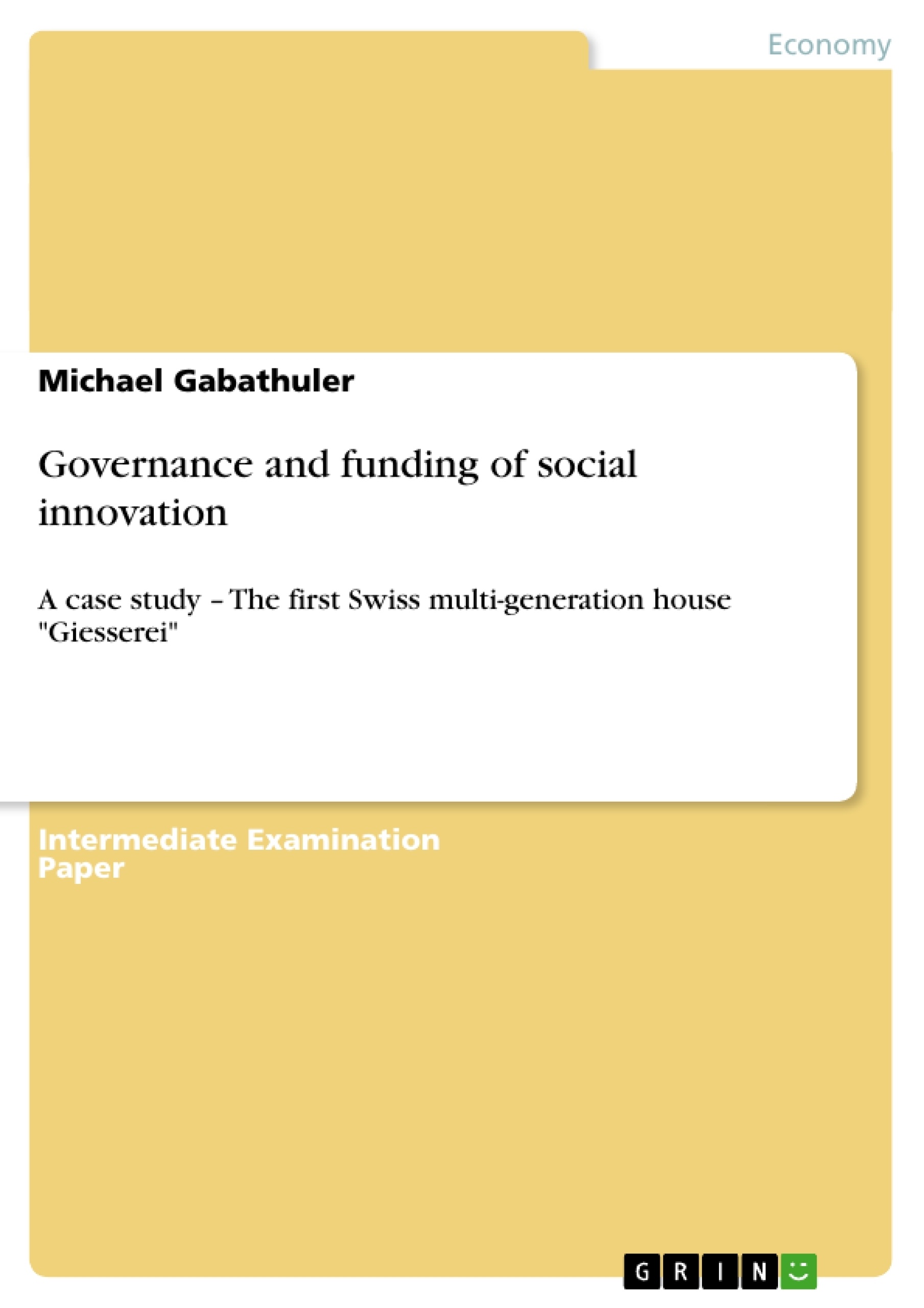Excerpt
Governance and funding of social innovation
A case study – the first Swiss multi-generation house ‘Giesserei’
1. Introduction
Not until such a long time ago, multi-generation housing was taken for granted. For instance, all members of a rural family spent their whole life on the farm. The parents also stayed there after their son with his family had taken over the croft. Grandparents, parents, children and grandchildren lived under one roof. Often, this happened because of pure need. The farming family needed every single workforce. Moreover, the elderly people did not have the money to retire and the young family could not afford its own house.
Economic, political and social developments such as increased prosperity and wealth, a comprehensive welfare state with diverse social services, the pluralisation and individualisation of the society and as a consequence the deterioration of the family as an important social unit lead to the dissolution of the multi-generation housing as the prevalent form of cohabitation.
Nowadays, more and more people rediscover the value of communality of multi-generation housing. It brings benefits to the younger cohabitants, families and singles as well as to the elderly people. However, the new multi-generation housing projects avoid the closeness and constraints of the old days. On the other hand, there is no family-given communality. It has to be co-created from scratch by the new neighbourhood community.
Therefore, self-organization, commitment, loyalty and reliability are fundamen-tal. Nevertheless, participation and engagement are voluntary.
In this paper, the new multi-generation housing estate “Giesserei” in Winterthur, Switzerland serves as case study to discuss the purpose of such a multi-generation house. The aim is to describe the degree of innovation of this project and answer the question of how its governance and funding look like.
2. Case Study – The multi-generation house ‘Giesserei’
The new multi-generation housing estate ‘Giesserei’ in Winterthur, Switzerland has been inaugurated at the end of January 2013. In Switzerland, it is unique because of its size as well as the broad mix of generation that live there. The residential estate consists of 150 apartments of different sizes as well as various business premises (see http://www.giesserei-gesewo.ch/).
The multi-generation housing project was initiated by the architect Hans Suter. He kicked-off his project idea with placing an advertisement in the local newspaper looking for like-minded people. In January 2006, he could present his vision of a multi-generation house to the first interested parties. Together, they developed their own idea of a multi-generation house.
In general, multi-generation housing aims at an inclusive, participatory neighbourhood community as a smart response to the current demographic changes. The purpose of the self-organized neighbourhood community is that the different generations take care of each other. The elderly people have the opportunity to stay longer within the community and young families and working people are supported in their daily life.
Social and ecological sustainability
To create a socially sustainable community life, the group around Hans Suter wanted to achieve a good mix of neighbours with people of different age and socio-economic background. In order to foster the community, the project is based on co-creation, participation, self-organization and voluntariness. To ensure a representative generation mix of Switzerland’s society, it was important that they did not only consider the needs of the elderly people such as obstacle-free living or elderly care but also the requirements of the younger generation and families like child care services or affordable rents. Despite the goal of a broad social diversity, the majority of the inhabitants decided that multiculturalism does not have to be set up by quotas. They agreed that a more important selection criterion is, that the new inhabitants show a clear commitment to the housing project instead of a simple interest in cheap apartments. Besides the social sustainability, they defined ecological sustainability as an important component of their community’s principles, too. Consequently, the ‘Giesserei’ promotes energy efficiency. Diverse energy supplies that include solar panels, high energy saving standards for the facilities like ‘MinErgie+’ and an ecological timbre construction were important requirements (see Liechti 2013).
[...]
- Quote paper
- Master of Art Michael Gabathuler (Author), 2013, Governance and funding of social innovation, Munich, GRIN Verlag, https://www.grin.com/document/268850
Publish now - it's free






















Comments